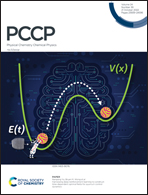The nearly free electron states and the conductivity limited by electron–phonon scattering of an OH-terminated MXene material, a case study of the Hf2C(OH)2 monolayer
Abstract
Reducing the electron–phonon scattering is always desirable for realizing high conductivity of actual materials at room temperature. It is seemingly feasible in some OH-terminated MXenes such as the Hf2C(OH)2 monolayer, which hosts the so-called nearly free electron states (NFESs) near the Fermi energy. The NFESs are characterized by a large separation between the major electronic probability distribution and the atomic layer of MXenes. This implies that the NFESs suffer from a very weak electron–phonon scattering, hence the high conductivity at room temperature of these materials. We perform first principles calculations on the conductivity limited by the electron–phonon (e–ph) scattering of the Hf2C(OH)2 monolayer. Our results indicate that the conductivity of the Hf2C(OH)2 monolayer at room temperature is indeed higher than those of most of the MXene materials. However, such a high conductivity cannot be attributed to the existence of the NFESs because of their relatively low electronic band velocity. This conclusion is applicable to other OH-terminated MXene materials such as Zr2C(OH)2 since their band structures around the Fermi energy are highly analogous. Our study suggests that both large band velocity and weak e–ph coupling are important for realizing ultrahigh conductivity facilitated by the NFESs in materials.



 Please wait while we load your content...
Please wait while we load your content...